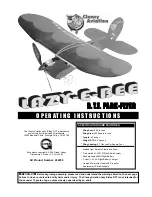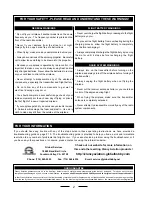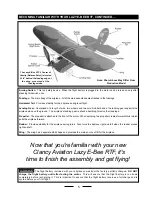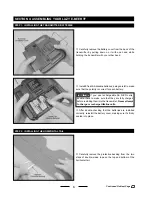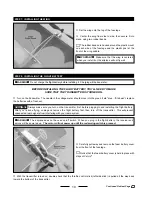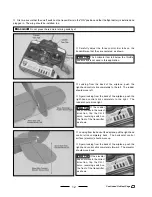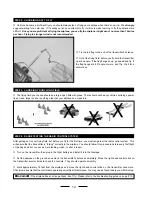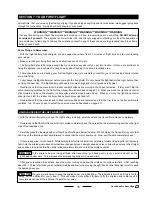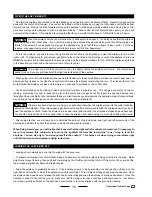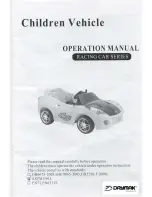
11
❑
Plug the connector on the flight battery into the
connector that is inside the fuselage. When plugged in
properly the connectors should "click" together.
✦
✦
✦
✦
✦
IMPORTANT
✦
✦
✦
✦
✦
As a safety feature, the connectors can
only be plugged in one way.
❑
Push the flight battery into the molded slot in the fuselage,
making sure that it's pushed firmly into place.
☞
When installed, the foam battery cover will keep the
flight battery from moving around.
❑
Reinstall the foam battery cover, making sure that it's secured firmly into place.
✦
✦
✦
✦
✦
IMPORTANT
✦
✦
✦
✦
✦
After a crash or hard landing, remove the foam battery cover and double-check that the flight battery
has not moved. If it has, reposition it and reinstall the foam battery cover.
Before actually flying your airplane you should understand how the airplane is controlled. Below we list the four basic flight
modes:
Climb:
Climbing is controlled by pushing the throttle control stick on the transmitter (the left-hand stick) completely forward
to turn on the motor, then by pulling back on the elevator control stick (the right-hand stick). When you push forward on the
throttle control stick, the motor will turn on. When you pull back on the elevator control stick, the elevator will move up,
causing the airplane to pitch up and climb.
Descent:
Descent is also controlled by the throttle and elevator control sticks. When you pull the throttle control stick all
the way back, the motor will turn off and the airplane will begin to slowly descend. To make the airplane descend faster, you
can also push forward on the elevator control stick. This will make the elevator move down, causing the airplane to pitch
down and descend.
Right Turn:
A right turn is done by moving the rudder control stick (the right-hand stick) on the transmitter. This is the
same stick as the elevator control stick, only it moves right and left. When you move the stick to the right, the rudder moves
right, causing the airplane to bank and turn right.
Left Turn:
A left turn is done by moving the rudder control stick on the transmitter to the left. When you move the stick to
the left, the rudder moves left, causing the airplane to bank and turn left.
SECTION 5: LEARNING TO FLY YOUR LAZY E-BEE RTF
STEP 1: BASIC OPERATION
Continued On Next Page
☛
☛
☛
☛
☛
STEP 2: GROUND OPERATIONS TESTING
Now that you're familiar with the four basic flight modes, you can test the radio control system and the motor while seeing
first-hand how the different controls operate to make the airplane climb, descend, turn right and turn left.
You'll want to do Ground Operations Testing until the flight battery no longer has enough power to operate
the motor. This will allow you enough time to become familiar with how the different controls react to the inputs from the
transmitter control sticks and it will prepare the flight battery for its first full recharge before flight.
PRO TIP

